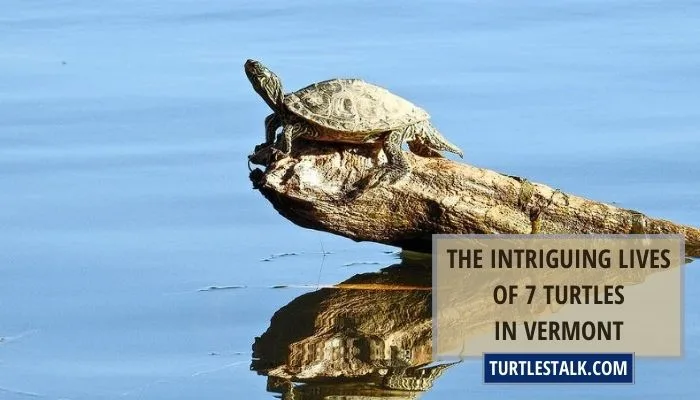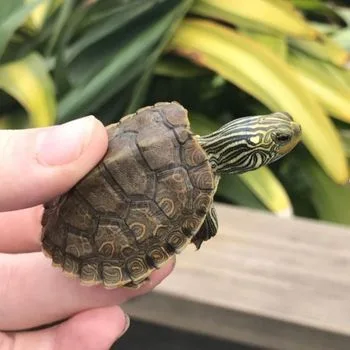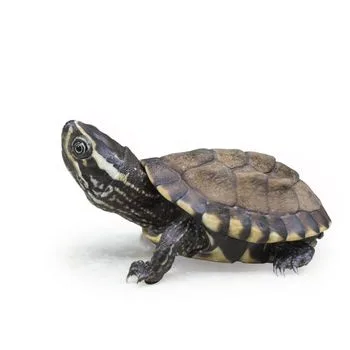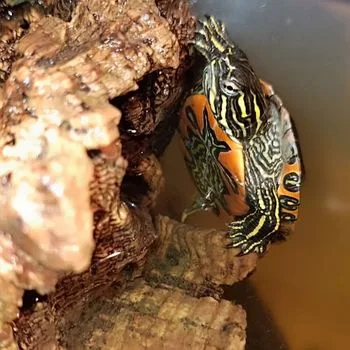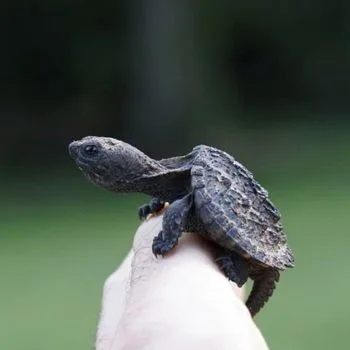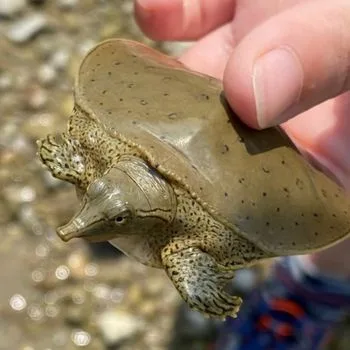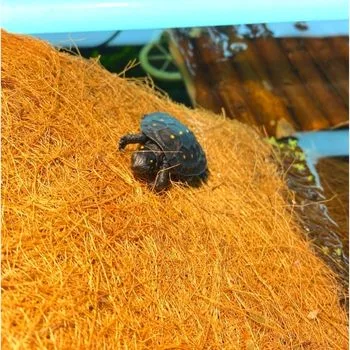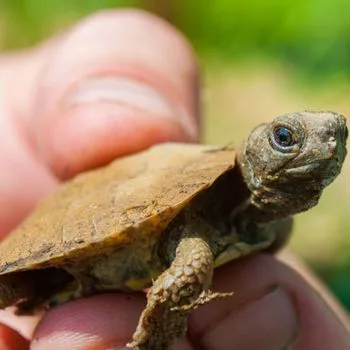The Intriguing Lives of 7 Turtles in Vermont
Vermont is home to seven species of turtles, and they are as diverse as the landscape! From the brightly-colored Painted Turtle to the Eastern Spiny Softshell Turtle, there’s something for everyone. But don’t take our word for it – come explore Vermont and discover these unique reptiles for yourself!
Whether you’re a nature enthusiast or just curious about turtles, you’ll be amazed at how much diversity this small state has to offer. We’ve got Wood Turtles, Spotted Turtles, Common Snapping Turtles, and even Common Map Turtles.
So if you’re looking for a fun way to get outside and explore all that Vermont has to offer – why not start with its turtles?
| # | Name | Details | Image |
| 1 | Common Map Turtle (Graptemys Geographica) |
| 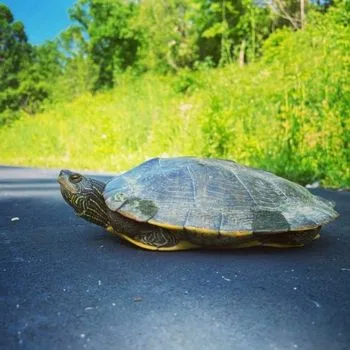 |
| 2 | Eastern Musk Turtle (Sternotherus Odoratus) |
| 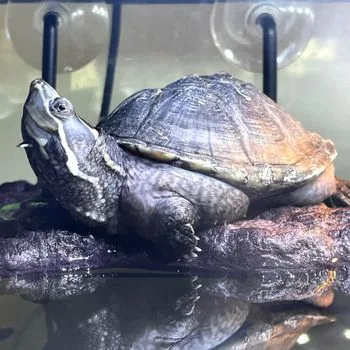 |
| 3 | Painted Turtle (Chrysemys picta) |
| 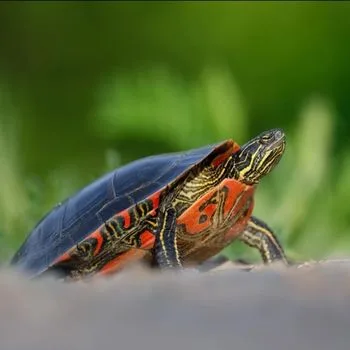 |
| 4 | Common Snapping Turtle (Chelydra serpentina) |
| 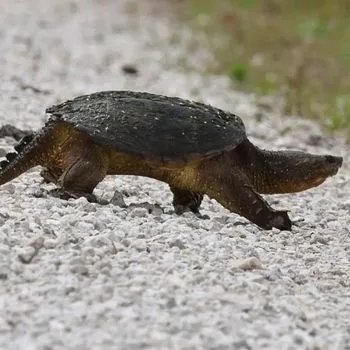 |
| 5 | Eastern Spiny Softshell Turtle (Apalone Spinifera) |
| 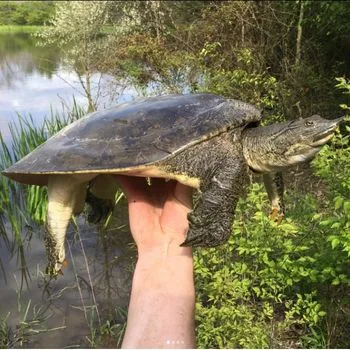 |
| 6 | Spotted Turtle (Clemmys Guttata) |
| 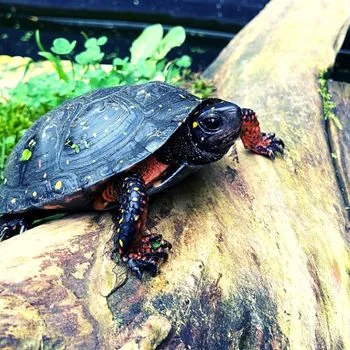 |
| 7 | Wood Turtle (Glyptemys Insculpta) |
| 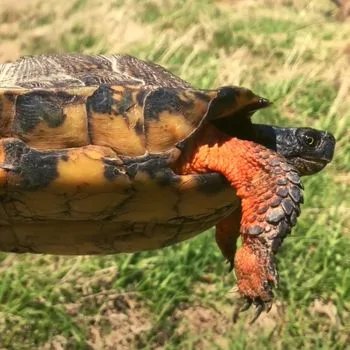 |
7 Turtles You Can Find in Vermont
In total, there are 7 species of turtles in the state of Vermont. This guide will take you on an exploration through each turtle type and provide tips for providing them with proper care. So, let’s get started on our journey into discovering all the wonders that these reptiles have to offer!
1. Common Map Turtle (Graptemys Geographica)
- Family: Emydidae
- Genus: Graptemys
- Type: Aquatic turtle
- Natural Habitat: Freshwater rivers, streams, and ponds in the eastern united states
- Lifespan: 20 years
- Also Known As: Map turtle, northern map turtle
- Maximum Size: 8-10 inches
- Maximum Weight: 1-2 pounds
- Prone to Diseases: Respiratory infections and shell rot
- Aggression Level: Not aggressive
- Predators: Otters, raccoons, birds of prey, and large fish
- Domestication: Can be kept as pets
Deep in the freshwater rivers, streams and ponds of the eastern United States lies a remarkable species of turtle – the Common Map Turtle (Graptemys geographica). This species is part of the Emydidae family, and is well-adapted to aquatic life, boasting powerful webbed feet, a long neck and flat shell for swimming. Adults can grow up to 8-10 inches in length with little size variation between males and females, ranging from 1 to 2 pounds in weight.
The Common Map Turtle is often confused with other members of its genus; however, it can be easily identified by its unique pattern of yellow lines that resemble a map on its shell. Its lifespan can reach up to 20 years when kept in proper conditions. It’s important to note that this species is illegal to own as a pet in some states due to varying regulations; therefore it’s essential to check your local state laws before attempting ownership.
These turtles may not be aggressive by nature but they may bite if threatened or disturbed. They are also prone to diseases such as respiratory infections and shell rot if kept in unsanitary conditions – so it’s important to take special care when handling them if you decide to keep them as pets.
As far as predators go, otters, raccoons, birds of prey and large fish all pose a threat despite their adaptations for aquatic life. Thankfully, there are no signs that this magnificent species is currently endangered here in Vermont.
2. Eastern Musk Turtle (Sternotherus Odoratus)
- Family: Kinosternidae
- Genus: Sternotherus
- Type: Semi-aquatic turtle
- Natural Habitat: Freshwater habitats, including rivers, lakes, and swamps
- Lifespan: 20 to 30 years
- Maximum Size: 5.5 inches
- Maximum Weight: 11.22 ounces
- Prone to Diseases: Shell rot, respiratory infections, etc.
- Aggression Level: Generally docile and not aggressive
- Predators: Raccoons, skunks, and birds of prey
- Domestication: Can be kept as pets
The Eastern Musk Turtle (Sternotherus odoratus) is a semi-aquatic species of turtle found in many freshwater habitats across the southeastern United States, including states such as Florida, Georgia, South Carolina, North Carolina, Tennessee, Virginia, West Virginia, Kentucky, Ohio, Pennsylvania, New York and New Jersey.
These turtles are generally quite docile and not aggressive. They can reach a shell length of up to 5.5 inches with males being typically smaller than females and will weigh around 11.22 ounces when fully grown.
These turtles are well adapted to life in the water thanks to their webbed feet which helps them to swim gracefully in their aquatic homes. They can even be kept as pets if you have the correct enclosure and diet set up for them; however regulations in Vermont may vary so double-check before taking on an Eastern Musk Turtle as a pet.
Eastern Musk Turtles prey on small invertebrates living close to the water’s surface or small fish from time to time; however they too are preyed upon by animals such as raccoons and birds of prey looking for an easy meal! If given proper care these turtles can live up to 30 years old although illnesses like shell rot or respiratory infections can occur if not cared for correctly.
It’s important that we take steps towards preserving their natural habitats and increasing public awareness about this species that calls Vermont home!
3. Painted Turtle (Chrysemys picta)
- Family: Emydidae
- Genus: Chrysemys
- Type: Aquatic turtle
- Natural Habitat: Rivers, streams, and large ponds in the northern united states
- Lifespan: 20 – 30 years
- Maximum Size: Males: can reach up to 5.5 – 6 inches, females: 5 – 10 inches
- Maximum Weight: Males: roughly 300 gm, females: on avg 500 gm
- Prone to Diseases: Shell infections
- Disease Carrier: Salmonella
- Aggression Level: Not aggressive
- Predators: Raccoons, skunks, foxes, herons, other birds, snakes, and large predaceous fish
Have you ever wanted to own a beautiful and unique pet? The Painted Turtle (Chrysemys picta) may just be the perfect fit for you!
Native to North America, this semi-aquatic reptile lives in Vermont’s rivers, lakes, marshes and ponds. The carapace length of these turtles ranges from 4-10 inches long with females being larger than males.
With proper care and clean living conditions, they have an average lifespan of 20-30 years – making them great companion animals for your family or even as solo pets. Just make sure to check what regulations there are in Vermont so that you can give your pet painted turtle the best life possible!
4. Common Snapping Turtle (Chelydra serpentina)
- Family: Chelydridae
- Genus: Chelydra
- Type: Freshwater turtle
- Natural Habitat: Freshwater habitats such as lakes, rivers, and swamps
- Lifespan: 50 years
- Maximum Size: 19 inches
- Maximum Weight: 40 pounds
- Prone to Diseases: Fungal infections and shell rot
- Aggression Level: Not aggressive until provoked
- Predators: River otters, bears and coyotes
- Domestication: Not recommended as pets
The Common Snapping Turtle, scientifically known as Chelydra serpentina, is an aquatic species native to freshwater habitats such as lakes, rivers and swamps. These turtles are highly adaptable and can live up to 50 years in the wild.
Adult Common Snapping Turtles typically measure 10-16 inches in shell length but can grow up to 19 inches and weigh around 40 pounds. They have a powerful bite with an estimated pressure of over 600 psi, making them one of the strongest biters among reptiles. Despite their strength they are generally not aggressive animals, though it is best to not provoke them and take caution around them.
Common Snapping Turtles often face threats from predators such as river otters, bears and coyotes when living out in the wild.
Unfortunately, their habitat is also threatened by human activities such as development and pollution which can lead to a decrease in population numbers if conservation efforts are not taken soon here in Vermont.
Although they make fascinating pets due to their long lifespan of up to 50 years when cared for properly, some states have regulations or restrictions on owning them so check with local authorities before acquiring this species as a pet.
These turtles have webbed feet for swimming and a long tail for propulsion allowing them to move quickly through water which also makes them difficult prey for predators.
Furthermore, although they occupy multiple states across North America from Alabama to Wyoming there is no other name than the Common Snapping Turtle so it’s easy to identify.
It should be noted that this species does not carry any significant disease that can be transmitted to humans yet they may still be prone to diseases like fungal infections or shell rot when kept in unsanitary conditions so proper care must be taken here in Vermont when considering owning one of these remarkable creatures as a pet.
5. Eastern Spiny Softshell Turtle (Apalone Spinifera)
- Family: Trionychidae
- Genus: Apalone
- Type: Freshwater turtle
- Natural Habitat: Slow-moving rivers, streams, ponds, and lakes with soft bottoms and abundant aquatic vegetation
- Lifespan: 30 to 40 years
- Maximum Size: 18 inches
- Maximum Weight: 12 lbs
- Prone to Diseases: Respiratory infections, shell rot, and pneumonia
- Aggression Level: Not aggressive, but will bite if threatened
- Predators: Raccoons, alligators, snapping turtles, otters, and larger fish
- Domestication: Not commonly kept as pets
The Eastern Spiny Softshell Turtle (Apalone Spinifera) is an incredible species of freshwater turtle found throughout Vermont. With powerful legs for swimming and a streamlined shell, this impressive creature has adapted to its aquatic environment over millennia. Adults measure between 8-18 inches with males being smaller at 8-12 inches compared to10-18 inches for females, weighing from 4-12lbs respectively. Despite their small size they are surprisingly strong and have a bite force that can put unsuspecting predators on their guard!
Yet these turtles aren’t all aggression; they’re also known to be quite timid and shy when humans appear near them, preferring the safety of rivers, streams or lakes – where plenty of vegetation exists in soft bottomed areas – as habitats. Unfortunately however some populations have declined due to habitat loss or collection for pets so it’s important we do everything in our power to protect these creatures and maintain a healthy ecosystem here in Vermont!
6. Spotted Turtle (Clemmys Guttata)
- Family: Emydinae rafinesque
- Genus: Clemmys
- Type: Semi-aquatic turtle
- Natural Habitat: Marshy meadows, ponds, ditches, bogs, swamps, etc. as small bodies of still water.
- Lifespan: 60 – 100+ years
- Maximum Size: 4 – 5 inches
- Maximum Weight: 0.5 to 1 pound
- Prone to Diseases: Vitamin a deficiency, respiratory diseases, abscesses, shell infections and fractures, and parasites
- Disease Carrier: Salmonella
- Aggression Level: Coexisting is possible for spotted turtles, but housing male individuals together may lead to aggression.
- Predators: Mammals, such as raccoons, muskrats, birds and large fishes.
- Domestication: Can be kept as pets
Introducing the Spotted Turtle (Clemmys Guttata)! This small, terrestrial and aquatic turtle is native to the eastern United States from Maine down to Vermont. Adults grow up to 4-5 inches in carapace length, with a weight ranging between half a pound and one pound. Juveniles can measure between 1-3 inches when they hatch.
These animals are quite hardy creatures who generally live peaceably amongst their own kind; however, under threat they may become somewhat aggressive. There are several predators that hunt them such as raccoons, skunks, snakes and birds of prey in this area.
Despite being only mildly domesticated creatures it is possible for these turtles to be kept as pets with specialized care. Prone illnesses include respiratory infections and shell rot – but fortunately this species does not act as a disease carrier itself!
7. Wood Turtle (Glyptemys Insculpta)
- Family: Emydidae
- Genus: Glyptemys
- Type: Semi-aquatic turtle
- Natural Habitat: They prefer to sleep in streams surrounded by forests during the winter but venture out to grasslands, barren areas, and sandy shores for food and nesting during the spring.
- Lifespan: 12+ years
- Maximum Size: 6 to 10 inches
- Maximum Weight: 0.5 – 2 pounds
- Prone to Diseases: Selenosis, metabolic disease
- Disease Carrier: Salmonella
- Aggression Level: Not aggressive
- Predators: Raccoons, coyotes, and foxes, arious mammals, fishes, and birds prey
- Domestication: Can be kept as pet if collected from a collector
The wood turtle (Glyptemys insculpta) is a semi-aquatic species of reptile native to Eastern North America, ranging from Nova Scotia to West Virginia. It is distinguishable by its dark coloring, with yellowish and orange markings across the shell that can even become brighter in the sun.
Typically measuring between 6 – 10 inches and weighing half a pound up to two pounds, the wood turtle that inhabits Vermont is both an impressive sight and hardy survivor.
Found mainly near forests where it spends winters asleep in streams, these turtles often venture into grasslands or sandy shores for food during the spring months. Wood turtles aren’t typically aggressive but must still beware as raccoons, coyotes and foxes are among their predators. They even possess a powerful bite force that allows them to break through shells!
Final Words
In the state of Vermont—a place rich in biodiversity—turtles play a significant role; with a variety of species dwelling in its forests, beaches, and rivers.
In this article, we took a closer look at these fascinating creatures (including their natural habitats, lifespan, size and weight, predators, and domesticability). It’s worth noting that, while keeping these turtles as pets is legal; their populations in Vermont may be declining due to habitat loss and collection for the pet trade.
It is our responsibility to ensure that these turtles remain protected and preserved for future generations to enjoy in the state of Vermont.
Other Nearby States:

